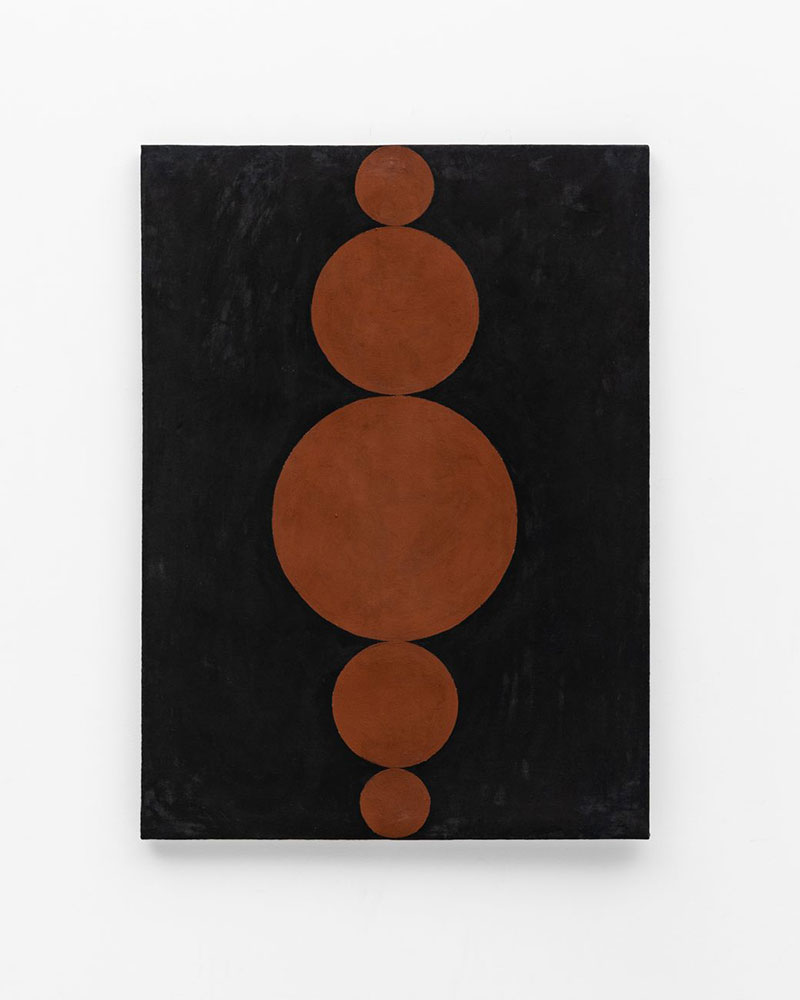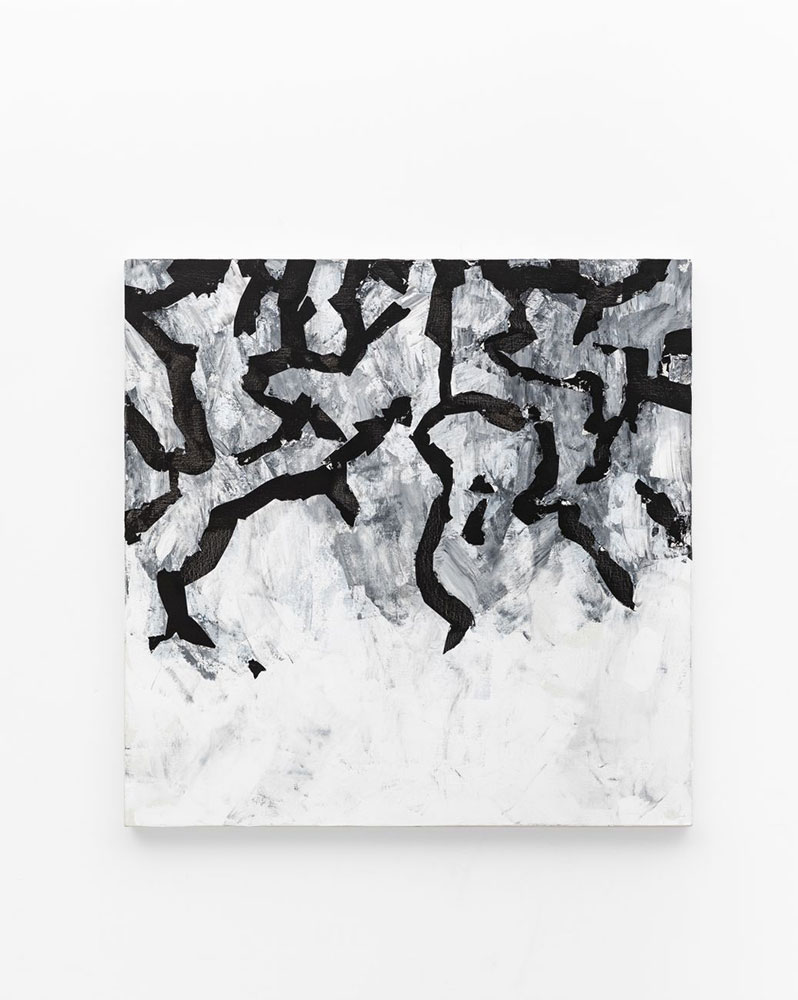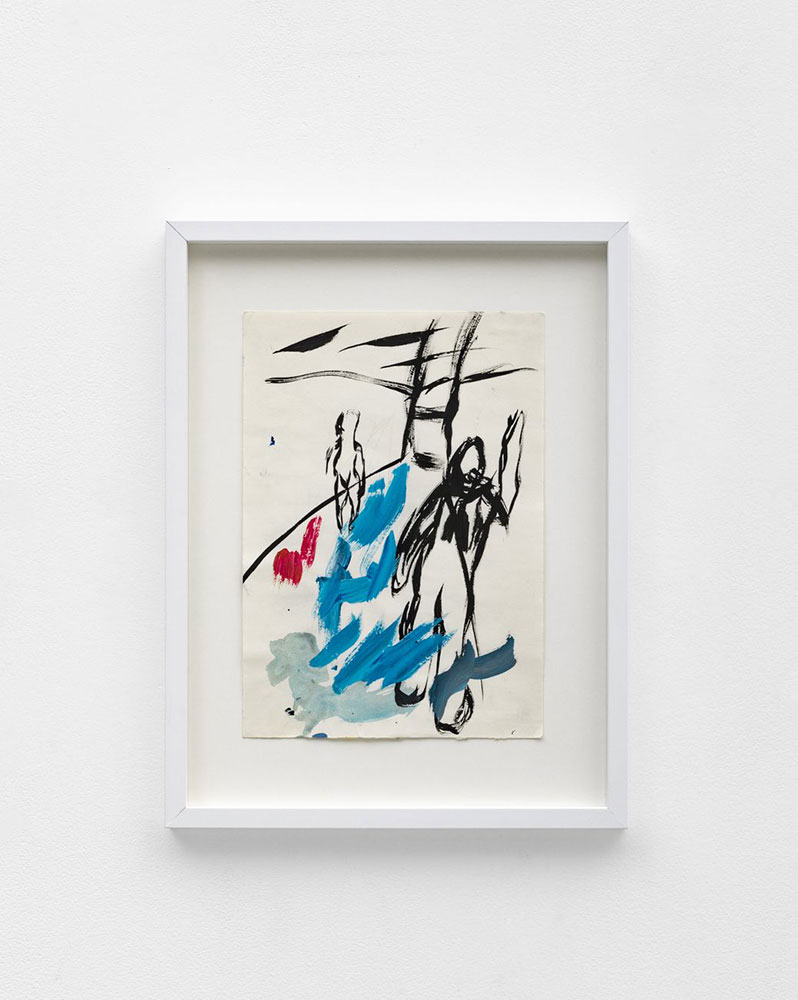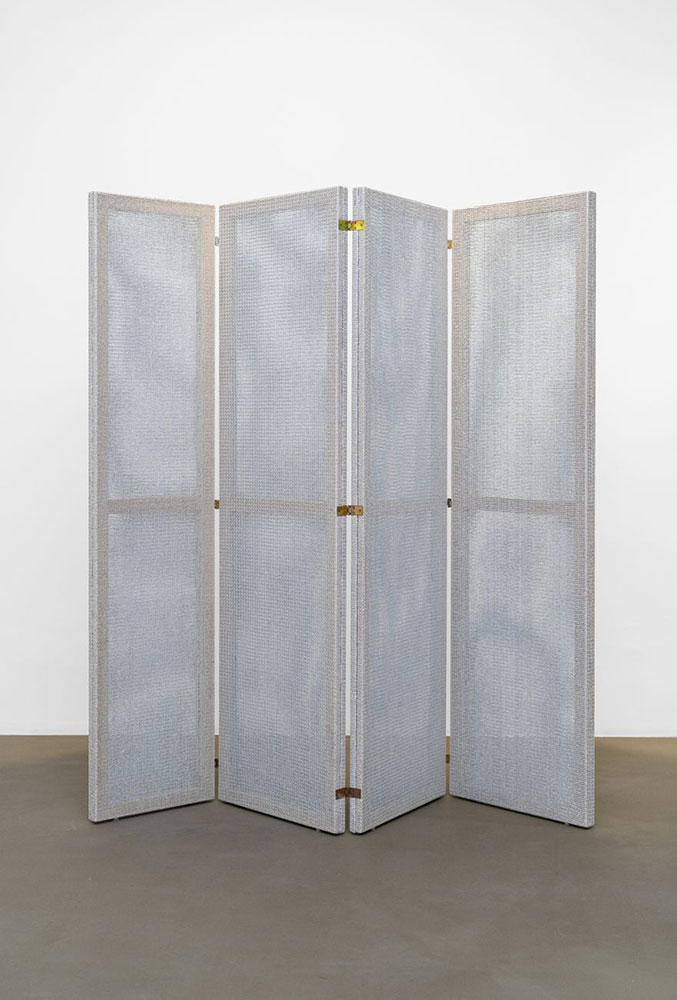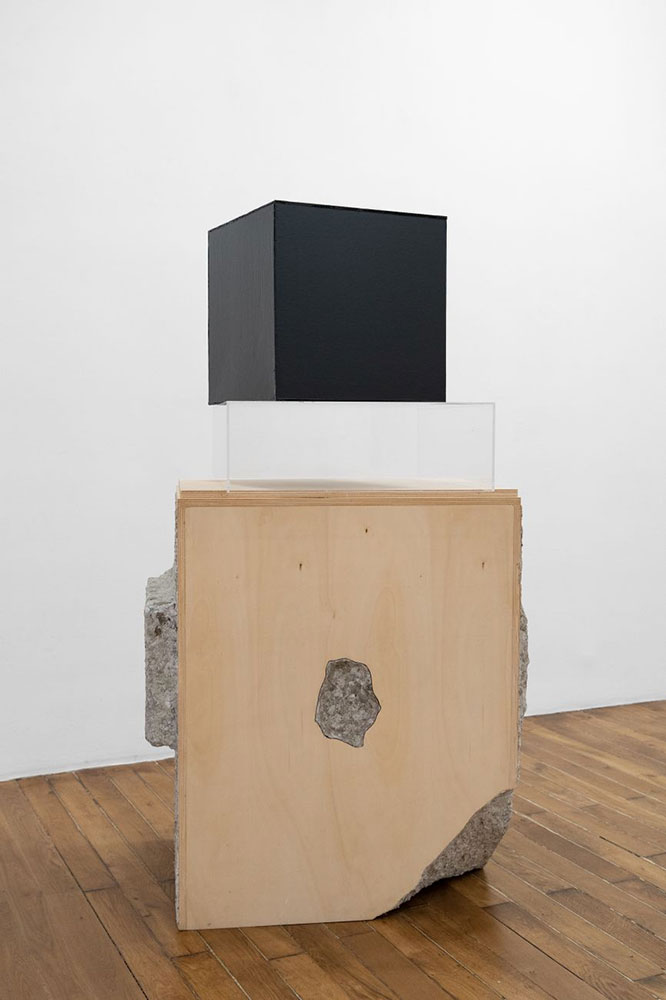PRESENTATION: Heimo Zobernig
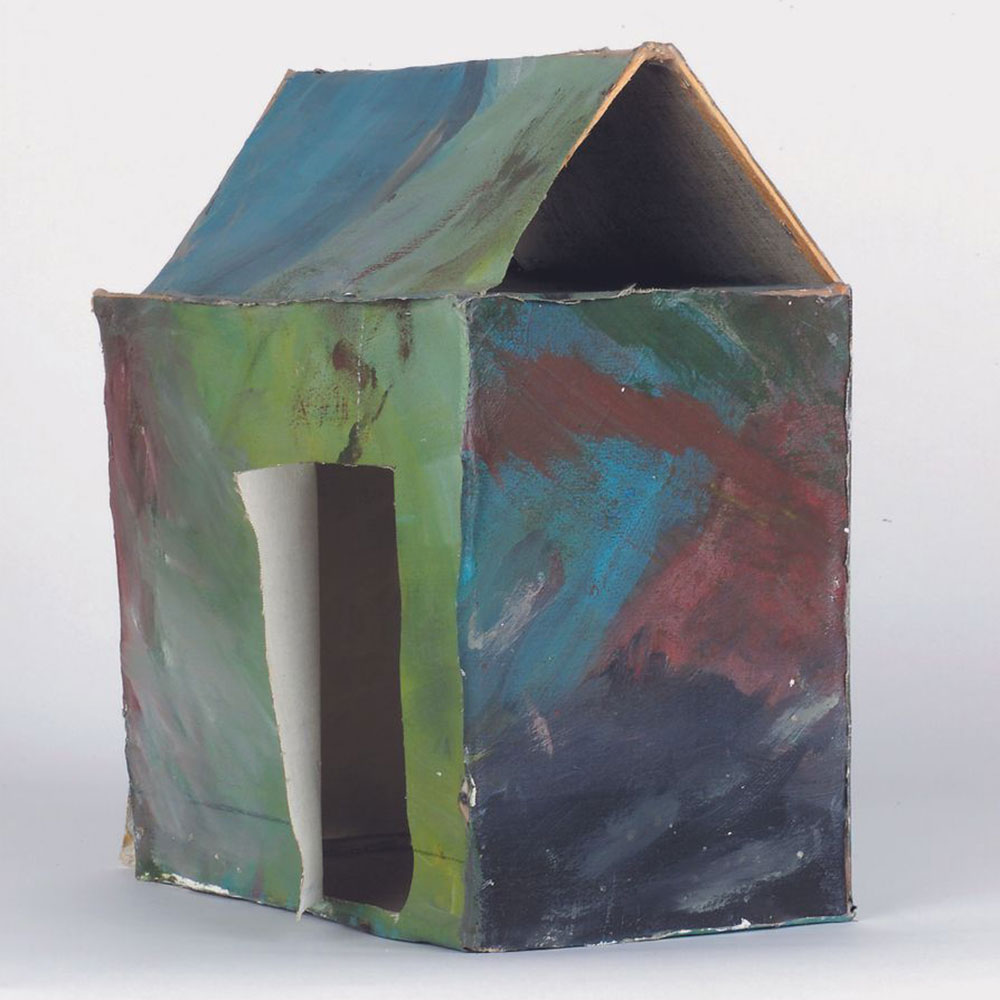 Painting, along with sculpture, film, performance, and design, is a central component of the intermedia art of Heimo Zobernig. Since the beginning of his artistic practice in the early 1980s, the artist has built up a comprehensive painterly oeuvre, always based on his attempt to explore color like a “scientist”. Thus, in Zobernig’s work, painting has become a machine for the creation of insight. Characteristics of the artist’s method in this context are strategies of simplification, standardization, and systematization using predefined rules and the artistic appropriation of industrial norms and widespread samples (such as TV test patterns).
Painting, along with sculpture, film, performance, and design, is a central component of the intermedia art of Heimo Zobernig. Since the beginning of his artistic practice in the early 1980s, the artist has built up a comprehensive painterly oeuvre, always based on his attempt to explore color like a “scientist”. Thus, in Zobernig’s work, painting has become a machine for the creation of insight. Characteristics of the artist’s method in this context are strategies of simplification, standardization, and systematization using predefined rules and the artistic appropriation of industrial norms and widespread samples (such as TV test patterns).
By Dimitris Lempesis
Photo: Galerie Chantal Crousel Archive
An exhibition revisits roughly forty years of Heimo Zobernig’s production. Often associated with major contemporary aesthetic movements (conceptual art, minimalism, geometric abstraction, etc.), here, the artist endeavors to examine the interrelationships between the works and the narratives, junctions, transfer and displacement underpinning heroic accounts and theoretical divisions. The choice to show two series of works on paper points to that inaugural transitional moment between figuration and abstraction. Putting them into perspective reveals variations, the development of an ongoing, often unresolved investigation of the problems raised by representation, line, color, background, and empty space. It also raises the recurring issue in Zobernig’s works of the artist’s subjectivity, his body, and nudity, all present in the drawings of his “youth” as well as the videos and performances he later did.
These early works coincide with several radical decisions, such as no longer titling the works, a potential way of doing away with the dead ends of identification and interpretation. Through this body of drawings, it is also possible to recognize their specific relationship to architectural forms. The exhibition retraces that point of development when the artist grasped the significance of showing the conditions and difficulties of production, the crafted materiality of colors, the flaws and failures, with all of the textural effects or cracking, like so many traces of the process of making, which can then be found in his early paintings. This is the total ambiguity, the enthralling paradox of Heimo Zobernig’s work, which involves producing unfinished precarious forms in a set of more or less strict frameworks, governed by systems of modernist grids. He seems to be the lone author of the obligations he gives himself, only following personal rules that are valid with regard to a temporary ethics, with this constant concern for production, whereby the quality of making, its imprecision, have demonstration value. Like for example “untitled” (1986/2014), this painted cardboard column at the upper end of which appears a photographic portrait of a woman, which draws its dual inspiration from the architecture of a bus stop at the opera in Vienna and the pillars of romanesque architecture. The piece, reworked and coated several times with black varnish, examines the dual relationship to photography and sculpture, its photogeneity, its frontal position, its quality as object or image. Heimo Zobernig expresses his doubts about the search for any interaction between sculpture and painting like this: “Dissatisfied with this situation, over time I tried different things with this sculpture—affixing other photographic material to it, pouring paint over it, and various other approaches. For example, the prominent holes in the lower part of the pillar are the result of kicking it with pointed shoes—a measure that was brought about by the negative remarks of an art collector about my cardboard sculptures… The work “untitled” (1986/2014) adopts the dimensions of the column and the original photos from 1986. Everything is painted over in black lacquer; I completely forewent the speculative expression of the original. The barely visible form of the four photos under the thin layer of synthetic lacquer leads the viewer with foreseen curiosity around the object. Perambulation: a classic moment in the percipience of sculpture.” Several pieces along the exhibition itinerary evoke the specific context of the studio, both the artist’s space and that of the art school, and reflect the significance of teaching as an experience and a site for Heimo Zobernig. Art school is not so much a place for producing knowledge for him as a situation generating materialities, new hybrid, undecidable forms. A seemingly insignificant cardboard architectural model untitled (1981), sitting on a plain black table “untitled” (1983), bears witness to his years of studying the applied arts, when he was formulating a language in between sculpture, set design, and architecture. Modeling, or maquette making, joins this aim to create autonomous form of its own, reduced to its most basic expression. These uninhabited, stripped down forms reveal a reductionist radicality, a spectacular anti-theatrality. The bar “untitled” (2012), exhibited several times, also attests to this endless fluctuating between art and the everyday environment, reality and its reproduction. Furthermore, it references, not without a kind of irony, those gestures and art conventions in the 1990s, when relational aesthetics, partying, conviviality became the norm for a new exhibition language.
Photo: Heimo Zobernig, untitled, 1981, Oil, cotton, wood, 35 x 30 x 15 cm, 13 3/4 x 11 13/16 x 5 7/8 inches, © Heimo Zobernig/ADAGP, Paris (2023). Courtesy the artist and Galerie Chantal Crousel, Paris. Photo: Archive HZ
Info: Galerie Chantal Crousel, 10 rue Charlot, Paris, France, Duration: 1/4-25/5/2023, Days & Hours: Tue-Fri 10:00-18:00, Sat 11:00-19:00, www.crousel.com/
